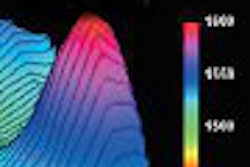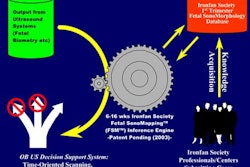The American Society of Echocardiography (ASE) has released its new guidelines for stress echocardiography, taking into account improvements in imaging equipment, refinements in stress testing protocols, and standards for image interpretation.
In its first update since 1998, the new standards also discuss the progress toward quantitative analysis, and document the roles of stress echocardiography for cardiac risk stratification and assessing myocardial viability (Journal of the American Society of Echocardiography, September 2007, Vol. 20:9, pp. 1021-1034).
Among the guidelines, tissue harmonic imaging (THI) should be used for stress echocardiography, according to the ASE. THI offers a number of benefits, including reduction of near-field artifact and improved resolution; it also decreases interobserver variability and improves sensitivity, according to the authors, led by Dr. Patricia Pellikka of the Mayo Clinic in Rochester, MN.
Also, contrast should be used when two or more segments are not visualized. "With experience and well-defined protocols, contrast stress echocardiography has been shown to be time-efficient," they wrote.
In addition, the baseline echocardiogram performed at the time of stress echocardiography should include a screening assessment of ventricular function, chamber sizes, wall-motion thicknesses, aortic root, and valves, unless this assessment has already been performed, according to the ASE.
In other findings, the authors determined that while quantitative methods may serve as an adjunct to expert visual assessment of wall motion, further validation and simplification of analysis techniques will be required for widespread use.
In comparing stress echocardiography with radionuclide imaging, the authors noted that studies and several meta-analyses have demonstrated comparable prognostic value. A strategy based on cost-effectiveness supported the use of echocardiography in patients at low risk and SPECT imaging for high-risk patients.
"Advantages of stress echocardiography include shorter imaging time, lack of ionizing radiation, portability, immediate availability of the results, lower cost, and availability of ancillary information about chamber sizes and function, valves, pericardial effusion, aortic root disease, and wall thicknesses," the authors wrote.
The guidelines address recent and future developments, including strain and strain rate echocardiography, 3D echocardiography, and myocardial contrast perfusion imaging.
Further modifications in protocol and software will enhance application of strain and strain rate echocardiography, according to the authors. While the feasibility of real-time 3D stress echocardiography has been documented, the authors stated that continued improvements in image quality will likely result in the technology's increased use.
As for myocardial contrast perfusion imaging, the authors noted that contrast may improve the sensitivity of stress echocardiography. While it may offer greater sensitivity than wall-motion analysis, its specificity may be lower, however.
Stress echocardiography is a well-validated tool for detecting and assessing coronary artery disease (CAD), the authors concluded.
"Its prognostic value has been well documented in multiple large studies, which have demonstrated its role for preoperative risk stratification before noncardiac surgery, recovery of function of viable myocardium, and identification of patients at increased risk of cardiac events and death," the authors wrote. "The test is less expensive than other stress imaging modalities, providing accuracy for detection of CAD and prognostic information equivalent to SPECT perfusion imaging. Moreover, it has great versatility, permitting assessment of valvular and pericardial abnormalities, chamber sizes, and wall thicknesses."
By Erik L. Ridley
AuntMinnie.com staff writer
September 7, 2007
Related Reading
Giant virtual reality chamber boosts 3D echo accuracy, August 2, 2007
3D echo effective in aortic stenosis appraisal, July 3, 2007
Myocardial echocardiography confirms coronary syndromes, June 29, 2007
Three-dimensional echocardiography useful for coronary artery disease diagnosis, June 5, 2007
Studies show benefit of ultrasound in cardiac care, June 15, 2007
Copyright © 2007 AuntMinnie.com



















